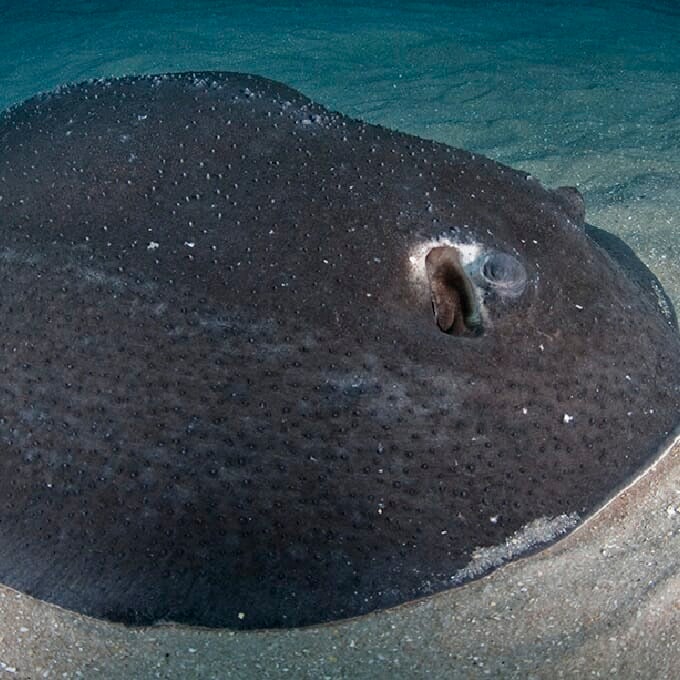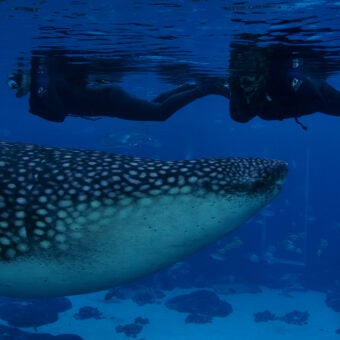-
Size
4.8 feet (1.5 m) -
Diet
Small fish, mollusks, and crustaceans -
Range
Indo-Pacific -
Habitat
Sandy bottom areas, small caves, reefs
Physical Characteristics
- The porcupine ray reaches a maximum length of 4.8 feet (1.5 m).
- Has a very thick, tall body with thin wings that complete its oval appearance.
- Skin is armored with strong dermal denticles, varying from flat to pointed and thorn-like.
- Displays countershading, being grey or spotted above and very pale or white ventrally. The tail is thick and lacks a venomous barb.
Animal Fun Fact
The porcupine ray is the only species in the genus Urogymnus.
Diet / Feeding
- Small fish, mollusks, and crustaceans.
Range / Habitat
- Found between the tropics in the Indo-Pacific, from the Red Sea and East Africa to the Marshall Islands and Australia.
- Found in sandy bottom areas and small caves and also frequents coral rubble around reefs.
Reproduction & Growth
- Ovoviviparous; eggs hatch internally and are born as live young.
Conservation Status
- “Vulnerable” on the IUCN Red List.
Additional Information
- This is the only species in the genus Urogymnus.
- The rough skin of this ray has been used as leather by many different cultures.
- This ray gets its name from its rough and protruding dermal denticles.





